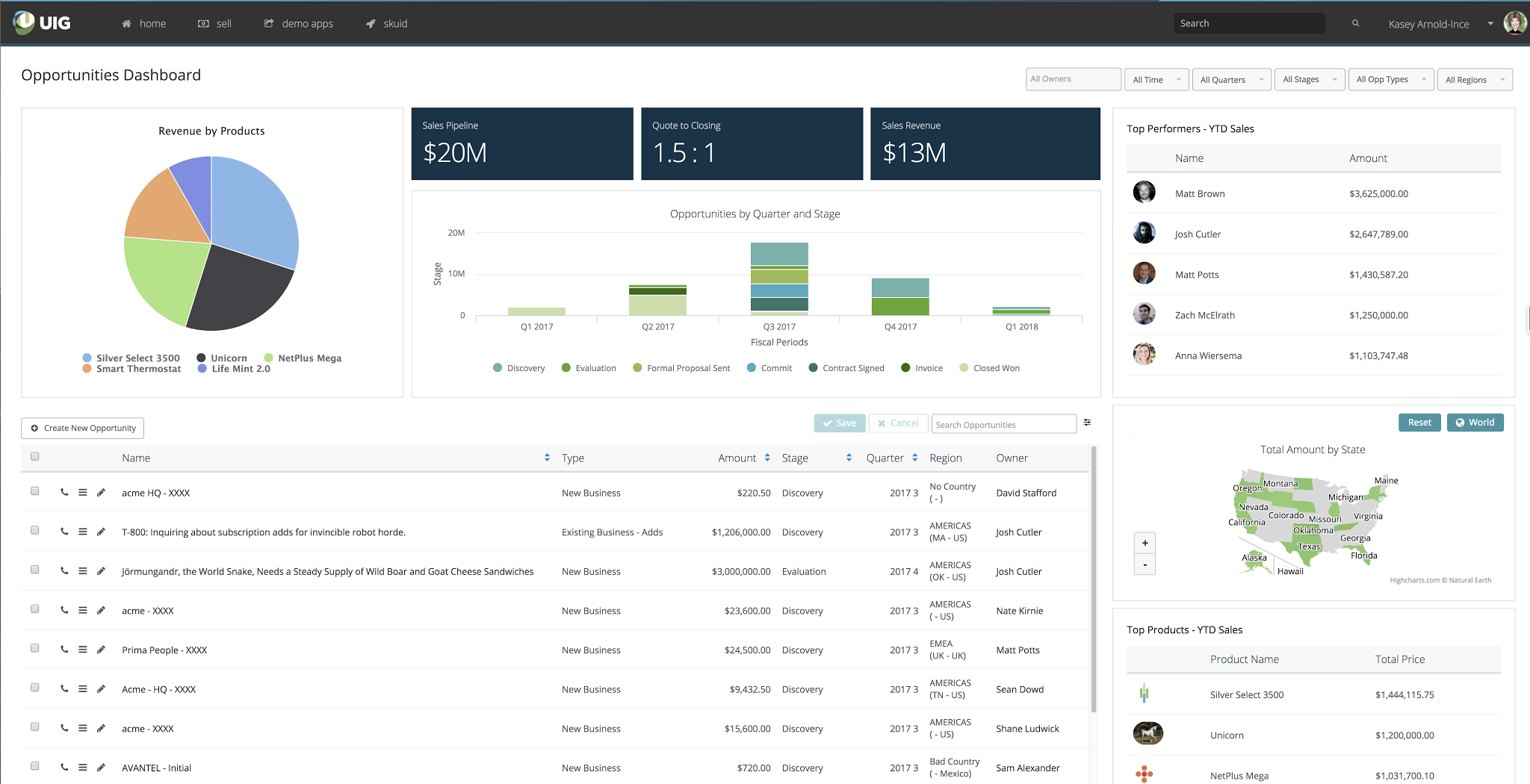Get Started with Skuid¶
Note
How to use this Guide
Get Started with Skuid is a beginner’s guide to using Skuid. We suggest you keep this page open in a browser while following along.
Skuid is a toolkit for rapidly creating and optimizing business applications across data repositories and services. With Skuid’s drag-and-drop Composer, anyone (including non-developers) can create powerful applications with beautiful, consumer-grade user interfaces.
Let’s face it, user feedback and changing business needs are continuous! Skuid gives you the power to quickly iterate your solutions in hours, not weeks or months. That’s because with Skuid you don’t need to write code for business logic or UI. Yet Skuid is also open and extensible for developers who wish to create their own unique extensions.
If your business’s primary system of record is Salesforce, we offer Skuid SFX—a managed package you can install directly into your Salesforce environment.
Here’s a Skuid page that integrates data drawn from the Salesforce data source with a custom design system (built without writing CSS) that gives it a unique, branded look and feel.
All of the data on this page can be edited and deleted (according to user permissions).
Working with Skuid¶
How can you use Skuid to build a business application like the one above? Follow three basic steps:
- Connect to data
- Compose pages
- Deploy pages to the appropriate users
Connect¶
To access data with Skuid, you must configure a Skuid data source to connect to the data and determine how the data source will authenticate end users.
- Learn about using Skuid pre-configured data source types to connect to a variety of data sources.
- Maintaining secure data is critical, so Skuid offers several different options for authentication.
Compose¶
The Skuid drag-and-drop Composer is where the Skuid page comes together. Use the Composer to develop simple, streamlined processes that ensure users spend less time wrestling with technology, and more time adding value to the business.
First, take the Composer tour, then follow the next three steps to create your first page.
Create a Skuid page [[]]¶
The page is the basic canvas for creating user experiences.
- Click Pages > Create.
- Name the page, then click Create.
Learn more about different ways to set up Skuid pages.
Use a Skuid model to connect to the data source[[]]¶
Use models to connect the Skuid page to data source objects. For each model, choose which of the object’s fields to include in the page.
Use components to create a customized user experience [[]]¶
Check out the Component overview to learn about Skuid components, and how they can be used to create a user interface. Then drag and drop components into the page, arrange them, and use each component’s properties pane to customize it.
Deploy¶
Deploying pages means making them available to your end users.
Skuid’s Salesforce managed package can deploy pages on both Salesforce Lightning and Salesforce Classic.
Updating Pages¶
It’s easy to make modifications, even after pages have been created and deployed.
- From the list on Pages, locate the page.
- Click on the page record to open the Composer and make revisions.
Warning
Making changes to pages in production while users are using the pages can produce unpredictable results. Best practice is to modify pages in sandboxes or dev orgs.
Explore Sample Pages¶
If you would like to see some sample Skuid pages, then check out our additional resources by clicking the Skuid logo in the upper lefthand corner of your Skuid app.
Under Sample Pages, click Get some pages to visit our sample page Github repository .
The README for the sample pages repo includes instructions for installing pages and other resources.
